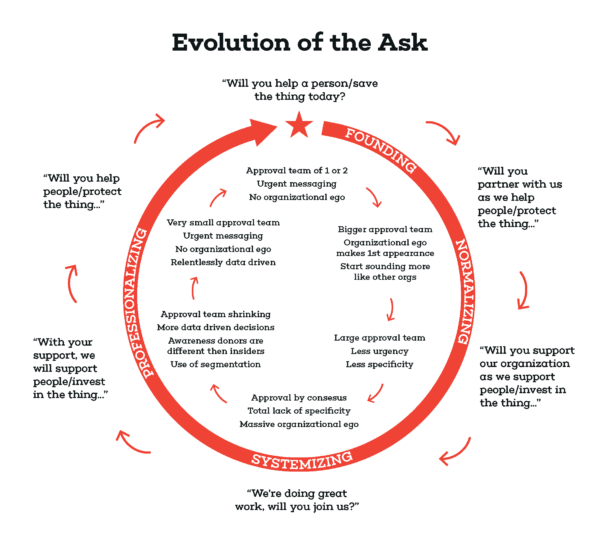I recently heard a client tell me, “I find it hard to even talk about fundraising at work. It’s like it’s a dirty word.”
Do you feel like this, sometimes?
It’s a common struggle among fundraisers as we work to educate our co-workers and internal teams to the necessary, yet nuanced world of fundraising.
And yes, the “F” word is Fundraising.😀
The misconception in many organizations is that fundraising isn’t really a function of our mission. Instead, fundraising is the activity that nobody likes to talk about.
And it’s you, the fundraiser, who suffers. Often times folks in fundraising feel the internal tension that their task is simply not seen as important as the boots-on-the-ground work that the organization is doing.
I’m sure you’ve heard some, or all of these objections when using the “F” word in your organization…
“That story is too sad, we can’t share it with donors.”
“We’re sending too many letters to our donors, we should stop.”
“We should be telling the donor more about the good things we do.”
“We don’t need to raise money for the programs you want to talk about.”
“This letter implies that we need help.”
Well, here are 4 tested and proven things you can do right now to help remove the internal tension and get folks more comfortable with using the “F” word.
1. Meet With Your Teams
To help educate internal teams on the importance of fundraising at your organization, schedule a short meeting that gives folks a simple overview of what fundraising is, and why it’s necessary for the mission.
This doesn’t have to be a long, bloated meeting. In fact, I would recommend to keep it short and use visuals, like a PowerPoint presentation to get your point across.
Donuts help, too.
Better Fundraising regularly does these presentations to programs teams, leadership, and boards, and find that folks walk away with a much clearer understanding to what fundraising is, and why it’s not a dirty word.
2. Share Your Appeals with Internal Teams
It’s often overlooked, but taking some time to walk around and literally handing internal staff a copy of your next direct mail appeal works wonders.
That’s because a common complaint from many internal teams is that they don’t know what’s happening in fundraising, and what donors are receiving.
So, handing out a copy of your next appeal gives you opportunity to build relationships, answer questions face-to-face, and develop goodwill with all stakeholders.
3. Run a Kick-Off Meeting
It’s a great idea for your Fundraising Team to have a kick-off meeting for every campaign.
The kick-off meeting is a great way to provide non-fundraising staff with an overview of the campaign, its components (letters, emails, events, etc.), the fundraising offer, story, and messaging, plus internal goals and objectives.
This meeting is not designed to be a discussion about “how” or “why,” but rather answering the “when,” “what,” and “where” for the campaign.
Set the expectation at the start of the meeting, and invite participants to stay behind after the meeting for questions and clarification, if needed.
4. Food
Folks working in nonprofits generally don’t need a reason to share morning tea and snacks with each other. Food brings people together, so take advantage of it!
If the weather is nice outside, consider having your fundraising team host a BBQ or picnic. Or have fundraising staff each bring a pie, cookies, or something delicious to put in the lunch room.
The key is to email your organization staff and let them know that the Fundraising Team is doing this, and to come and grab something to eat.
These ideas sound simple, and in many respects they are. But they are proven ways to educate folks to the importance of fundraising in your organization, remove tension with internal teams, and get you confidently using the “F” word, again.



